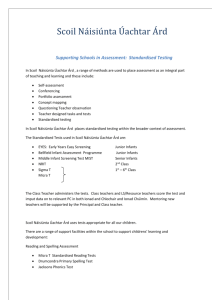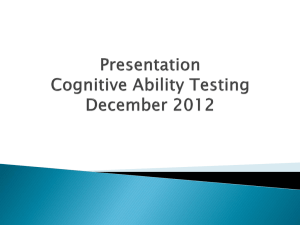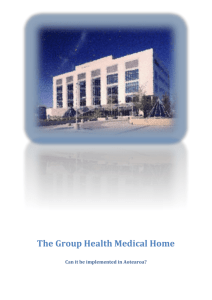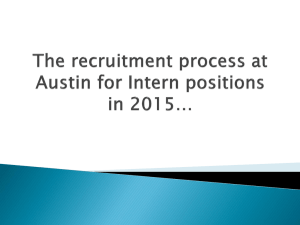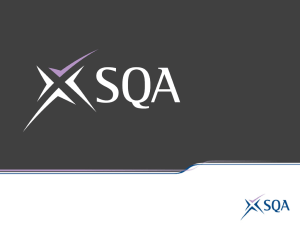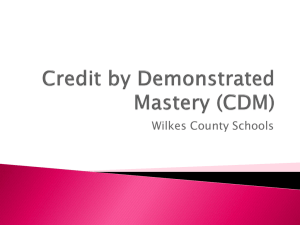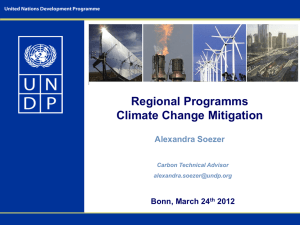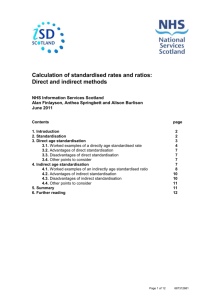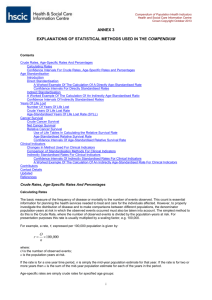DFID and Low Carbon Development
advertisement
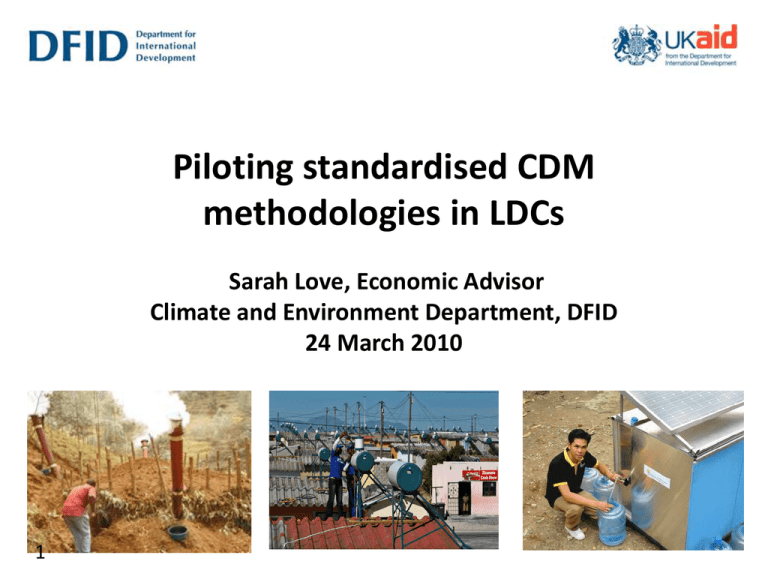
Piloting standardised CDM methodologies in LDCs Sarah Love, Economic Advisor Climate and Environment Department, DFID 24 March 2010 1 Outline • • • • 2 What are standardised approaches? Benefits of standardisation Overcoming challenges DFID pilot project – Aims and objectives – Progress so far What are standardised approaches? • A means of improving the efficiency and objectivity of the CDM approval process • Not a new concept – standardised elements are permitted in the CDM and form part of several meths – but are only used to a limited extent Increasingly standardised Project specific baseline & project specific additionality test Technology penetration rates Grid emission factors Industry-wide performance standards Standardised additionality test • Scope for greater use of standardisation, including for additionality test • The greater the use of standardisation, the greater the potential benefits but the greater the challenges 3 What are standardised approaches? An example: performance standards a. CDM (most current projects) Emissions Baseline determined on a project-by-project basis BAU = baseline credits b. CDM (standardised approach) Emissions per unit output Credits issued against a performance standard Actual emissions Time Performance standard credits Actual emissions Time Under both approaches, credits are issued after emissions reductions have been verified and are sold to carbon markets by the project developer 4 What are standardised approaches? Benefits of standardisation Standardised approaches can help improve: • Efficiency: Lower costs, complexity and uncertainty for project developers • Environmental effectiveness: Consistent additionality test • Equity: Improve geographical distribution by reducing costs and complexity and potentially making smaller-scale projects more attractive → 5 Could also help build capacity for new market mechanisms Benefits of standardisation Overcoming challenges • Standardised approaches are not a “quick fix” • There are challenges in terms of data requirements, particularly in LDCs Likely to be greater upfront costs in meth development • Need to decide on many parameters e.g. level of aggregation etc. • Setting the standard at the ‘right’ level will need expert judgement => need strong regulatory oversight to maintain environmental integrity • CDM decision in Cancun gives a broad range of organisations a mandate to develop standardised methodologies, prioritising underrepresented countries Gives encouragement for those interested in testing the concept… 6 Overcoming challenges DFID pilot programme In December 2010 DFID launched a project to develop and pilot standardised methodologies for project types particularly suitable for LICs Objectives: 1. to develop three new standardised CDM methodologies in sectors with high relevance to LDCs 2. To work with DNAs and local institutions to adapt/apply each methodology in three developing countries • Project team: consortium of Perspectives, Poyry, South Pole, GERES • Group of expert peer reviewers to assist Steering Group • Project is expected to complete in June 2011 with the submission of three methodologies to the Meth Panel 7 DFID pilot programme Progress so far… • First phase involved short-listing project types and countries • The following project types were selected following discussion with Steering Group and Expert Panel: 3 project types selected: …to each apply in 3 developing countries: • Charcoal Cambodia, Zambia, Mali • Water purification Zambia, Benin, Laos • Rural electrification Cambodia, Tanzania, Benin • Countries were selected on the basis of DNA interest in participating and project team capacity on the ground • Team are presenting initial findings at DNA Meeting in Bonn (10/11th April) • Draft methodologies due mid April 8 DFID pilot programme Questions for discussion • Do you agree that greater standardisation could be of benefit to LDCs? • Are you aware of others doing work in this area? • Do you have ideas for next steps? Systematic revision of existing methodologies? Targeting particular project types? Focus on more ‘challenging’ project types e.g. transport/building efficiency? 9


